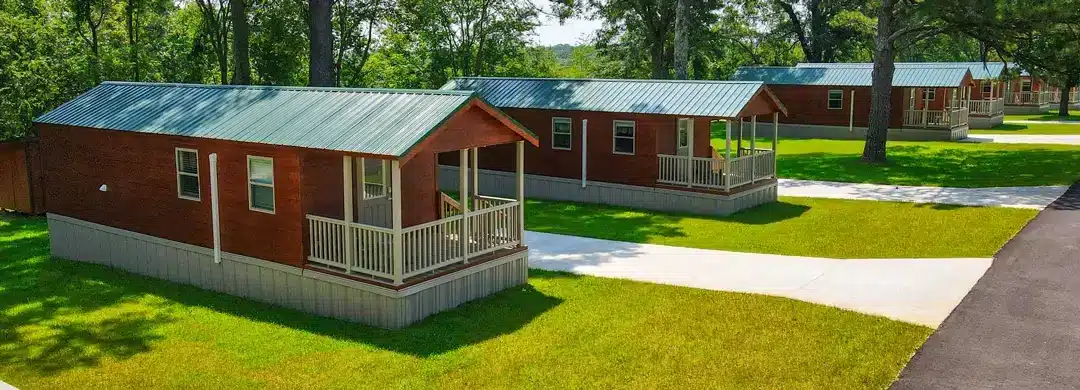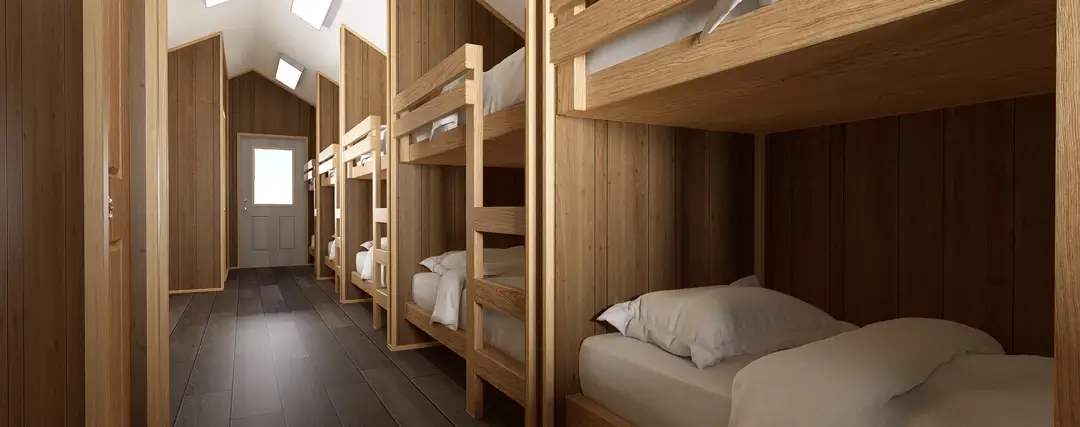Tips for Ensuring Campground
Staff Housing Compliance

OSHA and HUD Regulations for Campground Staff Housing

The Occupational Safety and Health Administration (OSHA) is responsible for employee safety, including housing, while Housing and Urban Development (HUD) provides housing standards applicable to employees.
For campgrounds, OSHA requires compliance with its General Duty Clause which mandates a safe working environment free from any known hazards likely to cause death or serious harm. These may include issues like dangerous wildlife encounters, violent weather conditions, or structural and terrain-related dangers.
However, HUD has established minimum property standards for construction, materials, and facilities plus maintenance requirements for staff housing. Adequate drainage, acceptable site grading to prevent flooding, and accessibility standards are included in the guidelines. The structural integrity of the cabins should be ensured by making them weatherproofed, roofed properly, and built with materials suitable for the climate. Employers also are expected to comply with space requirements, such as providing a minimum of 50 square feet of floor space per occupant and a ceiling height of at least 7 feet, and providing essential amenities, including ventilation and lighting. These standards aim to ensure a safe, sanitary, and decent living environment for the staff. By adhering to these standards, campground administrators show that they are committed to the well-being of their staff, which in turn boosts staff morale and staff retention.
Proactive Steps for Campground Owners
-
Conduct Regular Inspections
Regular inspections are vital for detecting potential hazards and resolving them promptly. Create a self-inspection checklist that covers important areas, including electrical systems, fire safety measures, plumbing, and structural integrity. Basic checklist includes:
- Electrical systems: Check for exposed wiring, malfunctioning outlets, or overloaded circuits.
- Fire safety: Verify that prescribed fire extinguishers are present in every community kitchen, dining area and dormitory area; are in good working condition; and that emergency exits are clear and unblocked.
- Plumbing: Look for leaks, water pressure issues, and proper drainage around the campground facilities.
- Structural integrity: Assess buildings, platforms, and other structures for signs of damage or wear and tear.
Establishing a consistent inspection schedule ensures that no potential hazards go unnoticed. Consistency is crucial for maintaining a safe working environment.
-
Document Everything
Maintaining detailed records is crucial for demonstrating compliance with regulations and tracking maintenance activities. To achieve this, it is important to document inspection dates, any issues observed, and any corrective actions taken. By doing so, not only are you demonstrating your commitment to safety, but you are also able to identify recurring problems that may need further attention.
-
Invest in Maintenance
Maintaining detailed records is crucial for demonstrating compliance with regulations and tracking maintenance activities. To achieve this, it is important to document inspection dates, any issues observed, and any corrective actions taken. By doing so, not only are you demonstrating your commitment to safety, but you are also able to identify recurring problems that may need further attention.
-
Communicate with Staff
Communicating with your staff is essential for maintaining safety in the workplace. Encourage your employees to report safety concerns they observe, such as a malfunctioning light fixture or a potential fire hazard. You can achieve this by fostering open communication channels and creating a culture of shared responsibility. Additionally, implement regular safety training sessions to educate your staff on proper procedures and emergency protocols. By empowering your team to take an active role in maintaining safety standards, you can ensure that your workplace is a safe environment for everyone.
When operating a campground, it is important to take a proactive approach to safety and compliance. This includes conducting regular inspections, maintaining thorough documentation, and engaging in regular maintenance. By doing so, campground owners not only ensure the safety of their staff and guests while safeguarding their business from potential hazards and liabilities, but they also increase staff morale and retention.
Reference:
U.S. Department of Labor. (n.d.). Occupational Safety and Health Standards- General Environmental Controls. Occupational Safety and Health Administration.
https://www.osha.gov/laws-regs/regulations/standardnumber/1910/1910.142
Wage and Hour Division. (2022, November). Fact sheet #26G: H-2A housing standards for rental and public accommodations. DOL.
https://www.dol.gov/agencies/whd/fact-sheets/26g-housing-standards-for-rental-and-public-accommodations-H-2A


